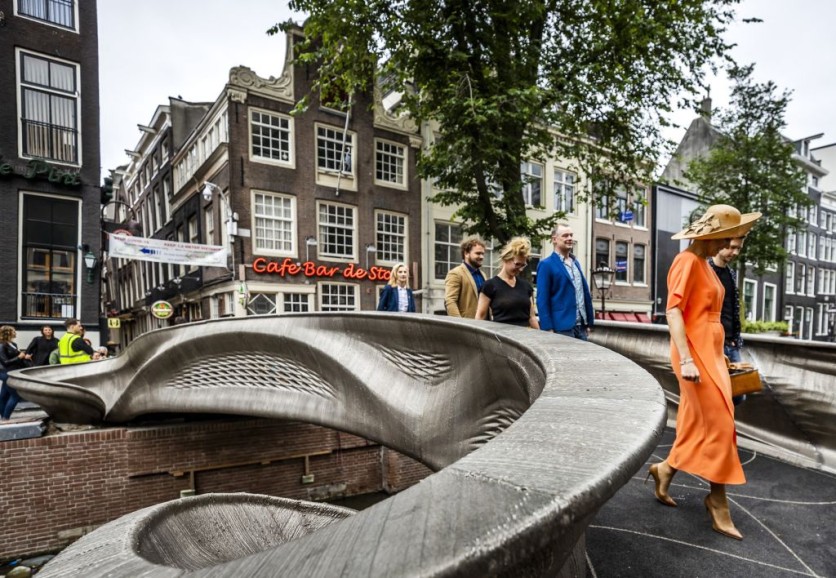
A 3D printed steel bridge is finally being used in Amsterdam, and is now being used for research. It required a staggering 4.9 tons of stainless steel to create, and also four years' worth of research to be brought to life.
The bridge uses smart sensors to test a number of metrics and provide data for researchers to use for all sorts of experiments and data gathering.
Beneficial Long-Term Goals
The construction in itself is amazing, but did you know there is another function for it besides giving humans a new path?
It also functions as a living laboratory to be able to collect data on vibrations, movement, stress, temperature, and more. All of the data collated can be able to see if 3D printed buildings, bridges, and other structures can be used for the long term.
The data is placed on a digital replica of the bridge. Albeit a computerized one, the digital clone can mimic the physical bridge with great accuracy given the real-time sensor data it's being fed.
Then, the data can be used to see the long-term behavior of the 3D-printed steel as a means to monitor its performance, based on a report by Business Insider.
Read More : 3D-Printed Building Made From Soil? Experts Boast It Can Revolutionize Construction Industry
Construction Marvel
The 3D-printed steel bridge was created thanks to the partnership between the Imperial College London and the Dutch-owned MX3D.
The bridge is a solid 12 meters long, weighing over 4.9 tons. The construction of this bridge was hugely thanks to four industrial robots that spent six months printing.
The six-month build is overshadowed by the four years worth of research and hard work that the researchers did to create such a feat.
Six robots were used to weld torches to be able to deposit the printed layers used for the bridge. It was then transported to its destination over the Oudezijds Achterburgwal canal located in Amsterdam's Red Light District.
It was unveiled by Queen Maxima of the Netherlands herself and is now open for public use, as reported by NewScientist.
3D Breakthrough
A milestone for 3D printers as this is the very first of its kind, and there has never been a strong or large enough building of this kind to accommodate cyclists.
There have been a lot of 3D-printed cars, food, and building just like when we covered the worlds first 3D-printed hotel.
There is also a vast sensor network that provides significant data to researchers. The sensors can measure certain changes the bridge will have over its life expectancy and integrity.
Craig Buchanan, Imperial College's Department of Civil and Environmental Engineering and co-leader of the project, said, "Research into this new technology for the construction industry has huge potential for the future, in terms of aesthetics and highly optimized and efficient design, with reduced material usage."
Leroy Gardner, co-director, also said that 3D printing now has vast opportunities in terms of the construction industry, which gives more "freedom" with using material properties and shapes.
3D-printed advancements doesn't limit to just buildings but for the medical field as well, such as the 3D-printed flexible medical braces that we talked about back in 2019 It just goes to show that by putting enough time and effort, 3D printing has come a long way in advancements.
Read More .: Scientists Unveiled First-Ever Reconstructed Dinosaur Brain, CT Scan Help Create 3D Model
This article is owned by Tech Times
Written by Alec G.




